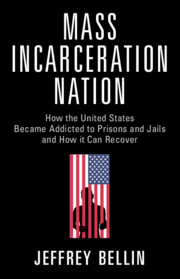 Mass Incarceration Nation
Mass Incarceration Nation from Part II - The Building Blocks of Mass Incarceration
Published online by Cambridge University Press: 03 November 2022
The previous chapter discussed the wave of political energy introduced into American politics by a desire to fight crime. The message resonated beyond the “street crimes” Senator Kennedy singled out in 1975, like rape and murder. Politicians also turned to the criminal justice architecture to solve society’s most vexing problems, like drug addiction, gun violence, child pornography, drunk driving, and intrafamily abuse. This approach required two components: new laws and increased enforcement. Legislators changed the laws, and they funded a hiring spree of police officers to catch people who broke those laws, prosecutors and judges to put them in jail, and correctional officers to keep them there.
To save this book to your Kindle, first ensure [email protected] is added to your Approved Personal Document E-mail List under your Personal Document Settings on the Manage Your Content and Devices page of your Amazon account. Then enter the ‘name’ part of your Kindle email address below. Find out more about saving to your Kindle.
Note you can select to save to either the @free.kindle.com or @kindle.com variations. ‘@free.kindle.com’ emails are free but can only be saved to your device when it is connected to wi-fi. ‘@kindle.com’ emails can be delivered even when you are not connected to wi-fi, but note that service fees apply.
Find out more about the Kindle Personal Document Service.
To save content items to your account, please confirm that you agree to abide by our usage policies. If this is the first time you use this feature, you will be asked to authorise Cambridge Core to connect with your account. Find out more about saving content to Dropbox.
To save content items to your account, please confirm that you agree to abide by our usage policies. If this is the first time you use this feature, you will be asked to authorise Cambridge Core to connect with your account. Find out more about saving content to Google Drive.